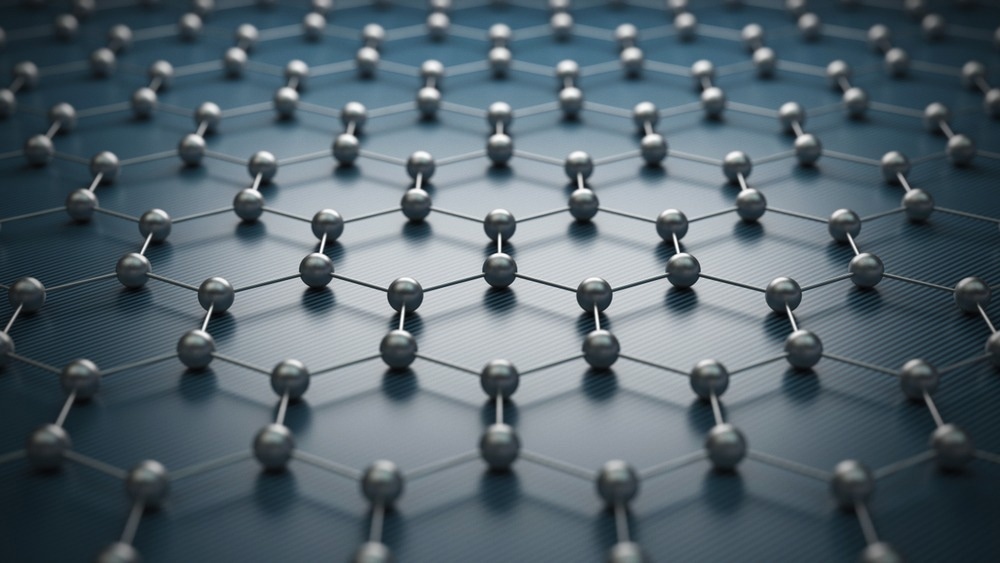The surfaces of two-dimensional materials can randomly absorb and interact with molecules in the surrounding environment during manufacturing and preservation. This phenomenon, which significantly influences many characteristics of two-dimensional materials, is not usually identified and catered for in many research investigations.

Study: Effect of Environmental Contaminants on the Interfacial Properties of Two-Dimensional Materials. Image Credit: koya979/Shutterstock.com
A recent study published in the journal Accounts of Materials Research summarizes the recent work conducted on different environmental contaminants and their impacts on the properties of two-dimensional materials and their mitigation strategies.
Two-Dimensional Materials: Overview and Significance
More than 150 distinct two-dimensional materials, including graphene and hexagonal boron nitride (hBN), have been identified. Many bulk materials, when exfoliated, can create two-dimensional materials using simple processing techniques.
These two-dimensional materials are generally classified based on their chemical composition. Two-dimensional materials are extremely thin sheets, so a thorough comprehension of their surface characteristics is necessary to understand their properties properly.
Two-dimensional materials may be added to a surface to alter its hydrophilicity, strength, and friction and inhibit or assist chemical and electrochemical processes. These changes offered by two-dimensional materials are vital for many applications, including heat transport, microfluidics, and semiconductors.
Impact of Environmental Contaminants on Two-dimensional Materials
According to recent studies, the inherent surface characteristics of two-dimensional materials are affected by ambient pollutants introduced accidentally during preparation. In many circumstances, absorbing environmental pollutants such as atmospheric hydrocarbons is unavoidable for two-dimensional materials.
However, this absorption can significantly affect the surface characteristics of two-dimensional materials and their interaction with other compounds. For instance, the water contact angle (WCA) of freshly manufactured graphene changes dramatically following the absorption of ambient hydrocarbons.
Other two-dimensional materials are also similarly impacted by environmental pollutants. Hexagonal boron nitride (hBN) has a comparable structure similar to graphene and can be made via chemical vapor deposition. However, the observed WCA of hBN rises considerably when exposed to the atmosphere for an extended length of time.
The electrolytic characteristics and doping effects of two-dimensional materials are also subjected to change when exposed to environmental pollutants.
Environmental Contamination: A Major Research Challenge
Environmental contamination is a significant barrier to two-dimensional material research because it masks inherent features, causes inconsistencies across experiments, and reduces device efficiency.
Large-area and high-quality two-dimensional materials, which are attractive prospects for many adaptable electronic devices, can now be regularly produced. However, the characteristics of two-dimensional materials may be changed merely by being exposed to the surrounding atmosphere, which is unavoidable in practically all production processes.
In this context, the discovery of the underlying processes of contamination and the development of viable remedies have the potential to transform the way two-dimensional materials are manufactured and utilized.
In this study, the researchers aimed to fill this research gap and identify the critical questions regarding the impacts of contaminants on two-dimensional materials. Firstly, the adsorption effects of airborne hydrocarbons on the properties of hexagonal two-dimensional materials were discussed.
The researchers next gave an overview of the impacts of other environmental pollutants on the hydrophilic and electrolytic characteristics of two-dimensional materials.
Key Findings of the Current Study and Future Outlook
When two-dimensional materials are exposed to oxygen and moisture, the residual hydrocarbons in the atmosphere adhere to their surfaces. Adsorption of hydrocarbons decreases surface tension and forms a barrier between the hydrocarbons and the electrolytes. Consequently, just being exposed to the surrounding atmosphere can drastically affect the hydrophilicity and electrolytic characteristics of these two-dimensional materials.
These modifications might be important but very variable based on the surrounding environment. Several hours of exposure to air can raise the water contact angle by up to 40° and lower the double-layer capacitance in two-dimensional materials such as graphite by up to 50 %.
Water has several effects on the surface characteristics of two-dimensional materials. Water vapors often compete with hydrocarbons for physical adsorption, slowing the rate of hydrocarbon pollution. However, water can intercalate between two-dimensional materials and underlying substrates, modifying their relationships.
Eliminating and correcting surface contamination in two-dimensional materials can significantly improve surface characteristics and device performance. Although completely preventing contamination remains difficult, a high-humidity atmosphere may be ideal for reducing the rate of contamination. The surface qualities of samples that have already been polluted by airborne hydrocarbons may be partly recovered by treatment in high-vacuum, high-temperature, or moderately oxidative settings.
Reference
Yang, F. et al. (2022). Effect of Environmental Contaminants on the Interfacial Properties of Two-Dimensional Materials. Accounts of Materials Research. Available at: https://doi.org/10.1021/accountsmr.2c00114
Disclaimer: The views expressed here are those of the author expressed in their private capacity and do not necessarily represent the views of AZoM.com Limited T/A AZoNetwork the owner and operator of this website. This disclaimer forms part of the Terms and conditions of use of this website.